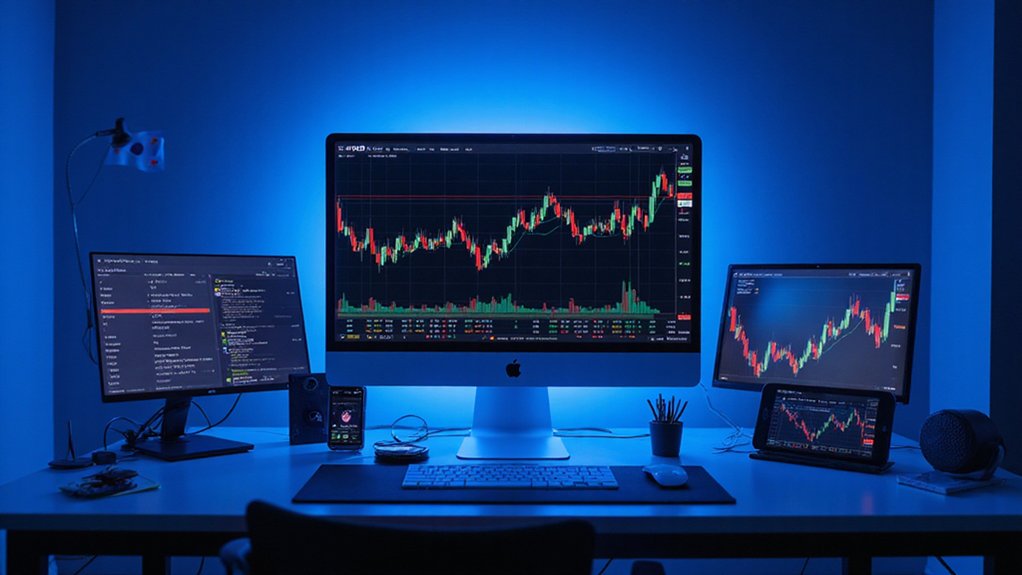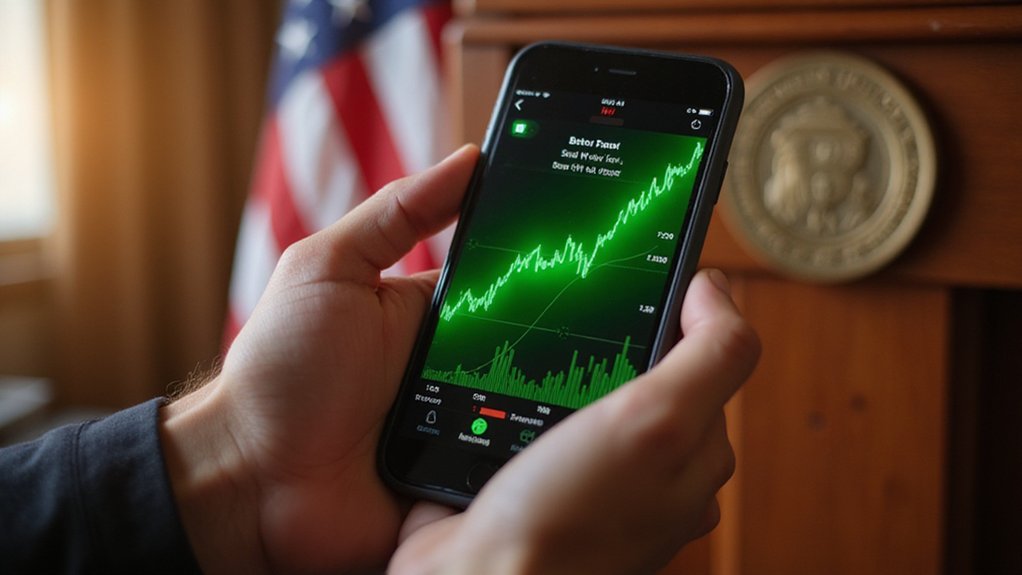Upbit stands as South Korea’s crypto behemoth, processing a staggering three million transactions per second with ISO-certified security protocols. The exchange offers over 150 actively traded assets—albeit exclusively with Korean Won—through an interface that prioritizes accessibility over complexity. Its Kakao Corp affiliation lends institutional credibility in a notoriously volatile sector, while its streamlined approach forgoes margin trading for spot-market simplicity. The platform’s combination of technological robustness and user-friendly design makes it worth consideration for traders seeking Eastern market exposure.

The labyrinthine world of cryptocurrency exchanges—those digital marketplaces where fortunes are made and lost with alarming regularity—finds one of its most formidable players in Upbit, South Korea’s largest cryptocurrency platform.
Ranked consistently among the global top five by daily turnover according to CoinMarketCap, Upbit’s prominence in the crypto ecosystem stems not merely from volume but from its association with Kakao Corp, the South Korean internet juggernaut whose backing lends the exchange a patina of institutional credibility often lacking in this notoriously volatile sector.
Upbit transcends mere trading volume, drawing institutional legitimacy from Kakao’s formidable backing in crypto’s turbulent landscape.
The exchange’s technological infrastructure impresses with its autonomous trading matching engine capable of processing an eye-watering three million transactions per second—a processing velocity that would make traditional financial exchanges blush.
Security credentials further bolster Upbit’s reputation, with ISO 27001, 27017, and 27018 certifications attesting to data protection standards that rival those of conventional banking behemoths. This commitment to security is reinforced by their 24/7 real-time monitoring system that safeguards user assets against potential threats.
Such robust security architecture becomes particularly salient given the sector’s unfortunate history of spectacular breaches.
Where Upbit distinguishes itself from competitors is in its asset diversity, supporting over 200 cryptocurrencies for deposits and withdrawals, with approximately 150 actively traded.
This expansive offering, however, comes with geographic limitations that prove vexing for international traders.
The platform remains stubbornly Korea-centric, accepting only Korean Won for fiat transactions—a constraint that effectively cordons off full functionality from global users despite attempts at internationalization through Upbit Singapore.
The absence of margin trading options signals Upbit’s strategic focus on spot markets, perhaps a prudent choice given the already substantial volatility inherent in cryptocurrency trading.
For novice traders, this simplicity, coupled with an interface that prioritizes user experience, creates an accessible on-ramp to the often bewildering world of digital assets.
Professional traders may lament the lack of advanced trading features, but Upbit’s socially-infused trading elements and Kakao integration offer unique compensatory advantages in a crowded marketplace where differentiation increasingly determines survival. In contrast to competitors like Bitfinex, which offers advanced trading options including margin and futures capabilities, Upbit maintains its distinctive approach to serving the cryptocurrency market.
Frequently Asked Questions
How Does Upbit’s Fee Structure Compare to Other Major Exchanges?
Upbit’s fee structure maintains competitive simplicity in a landscape of bewildering complexity.
While major exchanges like Binance and Coinbase deploy labyrinthine maker-taker models with volume-based incentives, Upbit opts for straightforward flat rates (0.2%-0.25%) across all user levels.
This transparency comes at a cost; frequent traders might find the absence of volume discounts less economical.
Withdrawal fees remain moderate, though the lack of tiered reductions—a feature increasingly common elsewhere—may frustrate high-volume participants seeking cost optimization.
Can I Transfer Crypto Directly From Upbit to Cold Storage?
Yes, users can transfer crypto from Upbit to cold storage, though not through a dedicated “direct transfer” feature.
Instead, the standard withdrawal process serves this purpose—simply select the desired cryptocurrency, enter a valid cold wallet address, and complete the security verification steps (2FA plus email/SMS confirmations).
Worth noting: Upbit requires complete KYC verification before permitting withdrawals, and while the platform has historically reimbursed hack victims, self-custody remains the gold standard for security-conscious traders.
What Security Measures Does Upbit Implement Against Hacking Attempts?
Upbit employs multi-layered defenses against its impressively robust roster of adversaries (159,000+ hacking attempts documented).
The exchange stores over 70% of assets in cold wallets—offline sanctuaries impervious to digital marauders—while distributing hot wallet funds across segregated containers to minimize breach impacts.
Their security architecture includes mandatory two-factor authentication, continuous transaction monitoring, and proactive cybersecurity protocols.
This thorough approach balances the paradoxical requirements of cryptocurrency exchanges: accessibility for legitimate transactions versus fortification against increasingly sophisticated threat actors.
Does Upbit Offer Staking or Yield Farming Opportunities?
Upbit delivers both staking and yield farming opportunities, though with distinctly different risk-reward profiles.
Their staking services—boasting over $2.2 billion in deposits—offer straightforward passive income (3.1% for Ethereum, 6.7% for Solana) with minimal maintenance requirements.
Meanwhile, their yield farming options cater to the sophisticated investor willing to navigate liquidity pools and variable APYs.
The former attracts beginners with its simplicity; the latter appeals to experienced traders comfortable with higher volatility and gas fees.
How Long Do Withdrawals Typically Take to Process on Upbit?
Withdrawals on Upbit follow a tiered timeline: crypto transactions typically process within 30 minutes to several hours (though network congestion can extend this to an eyebrow-raising 2-14 days), while SGD withdrawals hover around 30-45 minutes.
The platform’s most distinctive feature—a mandatory 24-hour delay following KRW deposits—serves as an anti-fraud measure that seemingly values security over convenience.
Processing status indicators (WAITING through FAILED) offer transparency during what can occasionally become a patience-testing exercise.









